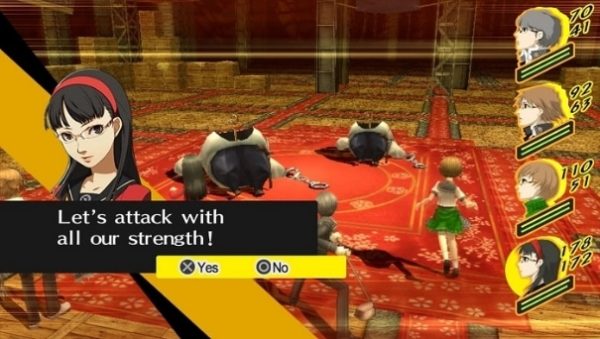Over the past 10 years, though not as Final Fantasy or Dragon Quest , the Personaseries has become one of the most important and iconic in the JRPG landscape. With the arrival of the very special Persona 5 , there is no better chance to take a closer look at the history that has led to the success of this famous Atlus labeled series.
When one speaks about Person , one thing that often tends to be forgotten is that this is born as a spin-off of Shin Megami Tensei , whose origins in turn come from another Atlus series: Digital Devil Story: Megami Tensei ( also known as MegaTen ), born in 1987 on NES.
For those who did not know it, the two MegaTen were the first Japanese role-playing games to exploit three-dimensional labyrinthine dungeons explorable in the first person, a feature used only in Western role play.
Just like for CD Projekt and his
The Witcher , Digital Devil Story: Megami Tensei was born from Atlus’s intent to follow up on the events in the homosexual novels of writer Aya Nishitani. whose plot revolved around the evocation of demons through a software made by a Japanese student.
In 1992, however, Atlus decided to try to create something more personal in the Megami Tensei universe , thus creating Shin Megami Tensei(Shin in Japanese means New). The plot of the game is always based on a software capable of evoking demons through a portable device called COMP. Evoked demons, however, rebel and soon conquer the Earth; the setting moves in the future into an apocalyptic world where the player is catapulted into a steadfast fairy among demons for the
domination of the planet, faced with a series of moral choices that force him to deploy with a faction, other. The deployment also becomes an important part of the gameplay front, because it is the basis on which bargaining with demons is to become a symbol of a
ll the games of the Shin Megami Tensei series. Contracts can be used to recruit demons and use them as party members, each with unique features and abilities that evolve with the protagonist as he gains experience points. Another fundamental mechanic, which has also become this iconic in the series, is the fusion, which allows two or more demons to merge with each other to give birth to an even more powerful creature.
A second chapter came out the following year, but the major breakthrough in the series came in 1994 when Atlus released its Shin Megami Tensei If … , the first spin-off of the main series.
The story tells of a boy who, in revenge for his abusive abuses by his classmates, performs a dark ceremony that carries him, his school, and stud
ents in a demonic dimension. The protagonists of this story are a group of 4 poor students forced to face the Expance, or five towers that represent the physical manifestation of the seven sins of the capital. The base of the gameplay is the same as the other two chapters of the series: exploring dungeons in the first person, fighting, bargaining and casting demons through the use of the COMP.
Megami Ibunroku Person
The title was not particularly appreciated by critics, but the Japanese audience seemed to be particularly interested in the plot and, above all, in the peculiar school setting. Atlus at the time could not yet imagine it, but with that title had just planted the seed of its success: from the foundations of that Shin Megami Tensei If …, was born Megami Ibunroku Person . Date 1996
and developed for Playstation, it was the first title of the Shin Megami Tensei universe to officially land in the West as well.
The story revolves around a group of St. Hermelin school students in Tokyo who, one day, almost as a joke, decide to participate in a spiritual ritual, unconsciously acquiring the power to evoke the Person, the physical manifestations of the human subconscious (
whose inspiration originates from the studies of psychoanalyst historian Carl Gustav Jung). Thanks to their power, they will have to restore order in their city now invaded by demons.
The novelties introduced by this first Person are different, beginning with the great care in the plot, especially in dialogues and, for the first time, in iterations with NPCs. Dungeon exploration, this time, alternates between the first and the third person,
depending on whether you are exploring runners or rooms. The fights are also in third person, with a party of five people to be deployed along a grid. There is obviously no recruiting and merging of demons, with the difference that creatures obtained this time must be assigned to each party member, so each of the characters may have access to their abilities.

